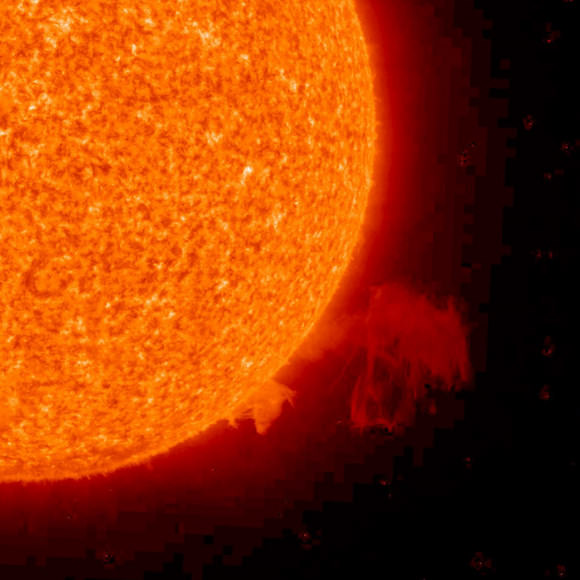[/caption]
We all like to know in advance what the weather is going to be like, and space weather is no different. However, predicting solar storms from the sun — which can disrupt satellites and even ground-based technologies — has been difficult. But now scientists say magnetic loops breaking inside the sun provide two to three-day warnings of solar flares. “For the first time, we can tell two to three days in advance when and where a solar flare will occur and how large it will be,” said Alysha Reinard, from the NOAA Space Weather Prediction Center.
Reinard and her team found that sound waves recorded from more than 1,000 sunspot regions reveal disruptions in the sun’s interior magnetic loops that predict a solar flare. They found the same pattern in region after region: magnetic twisting that tightened to the breaking point, burst into a large flare, and vanished. They established that the pattern could be used as a reliable tool for predicting a solar flare.
“These recurring motions of the magnetic field, playing out unseen beneath the solar surface, are the clue we’ve needed to know that a large flare is coming—and when,” said Reinard.

The new technique is already twice as accurate as current methods, according to the authors, and that number is expected to improve as they refine their work over the next few years. With this technique, reliable watches and warnings should be possible before the next solar sunspot maximum, predicted to occur in 2013.
“Two or three days lead time can make the difference between safeguarding the advanced technologies we depend on every day for our livelihood and security, and the catastrophic loss of these capabilities and trillions of dollars in disrupted commerce,” said Thomas Bogdan, director of NOAA’s Space Weather Prediction Center.
The team’s paper has been accepted for publication by the Astrophysical Journal Letters.
Source: NOAA


Is that really how’s our Sun looks like and not a drawing from artist? amazing~ maybe the prediction can be linked to weather on earth, perhaps monthly temperature peak..just guessing. Good findings.
The magnetic fields in the sun become gragged by the ionized plasma. If there are vortex flows of plasmas this winds the magnetic field fields up and increases the magnetic energy density. This exterts a pressure on the surrounding stellar material and if strong enough it breaks through. Solar flairs often have arc shapes, which illustrates how material is being thrown out of the solar surface by magnetic fields.
LC